OECD work on Regional Trade Agreements and the environment
POLICY PERSPECTIVES
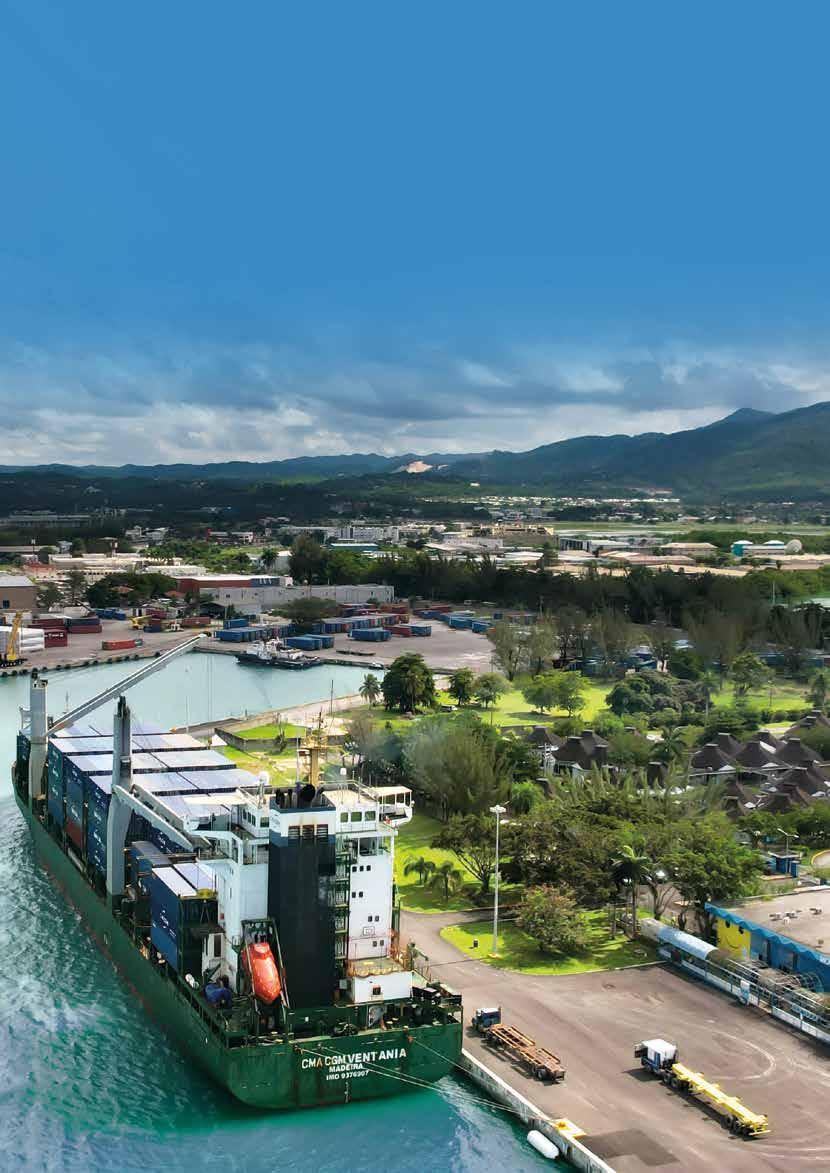
DISCLAIMERS:
This work is published under the responsibility of the Secretary-General of the OECD. The opinions expressed and arguments employed herein do not necessarily reflect the official views of OECD member countries or of members of the Global Forum on Tax Transparency and Exchange of Information for Tax Purposes or of the donor countries.
This document has been produced with the financial assistance of the European Union. The views expressed herein do not necessarily reflect the official views of the OECD or of the governments of its member countries and can in no way be taken to reflect the official opinion of the European Union.
This document, as well as any data and map included herein, are without prejudice to the status of or sovereignty over any territory, to the delimitation of international frontiers and boundaries and to the name of any territory, city or area.
The use of this work, whether digital or print, is governed by the Terms and Conditions to be found at http://www.oecd.org/termsandconditions
© OECD 2023
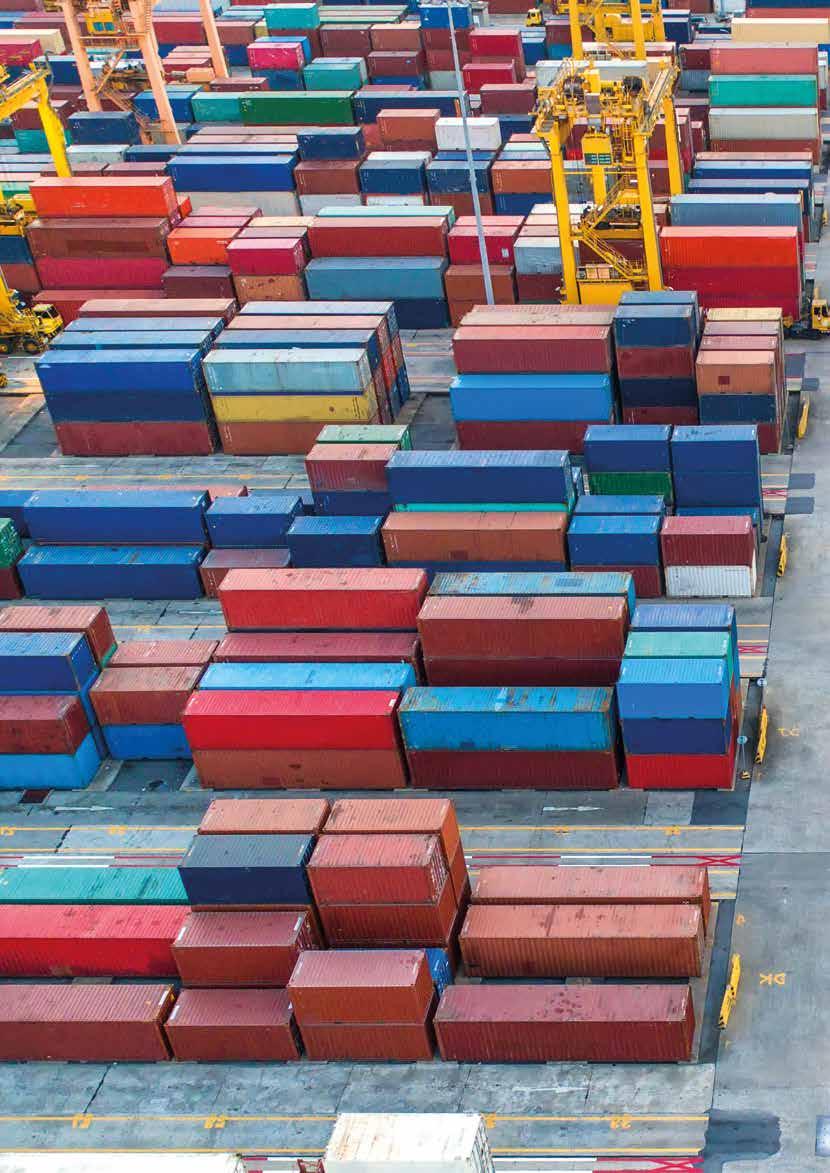
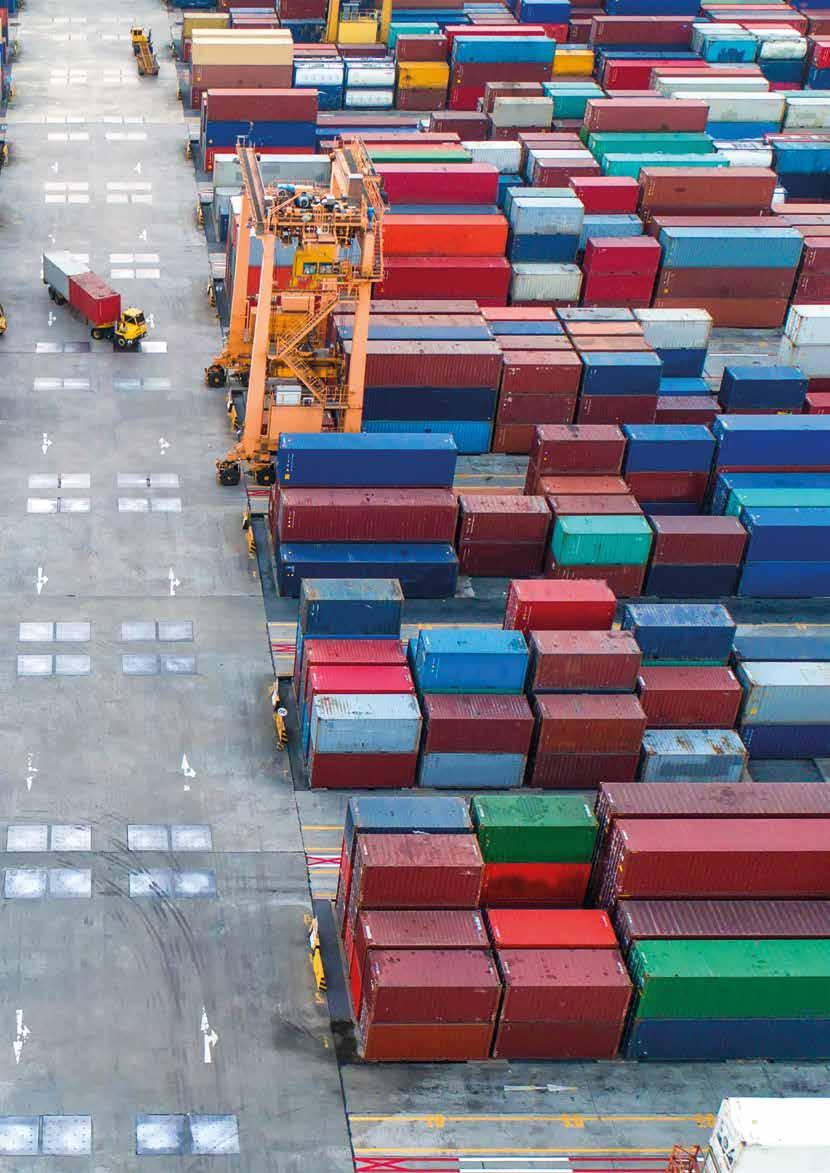
REGIONAL TRADE AGREEMENTS AND THE ENVIRONMENT 1 POLICY PERSPECTIVES CONTENTS Key messages 2 1. Introduction - Why do Regional Trade Agreements incorporate environment objectives? 4 2. Tracking typology - What kinds of environmental provisions are included in RTAs? 6 3. Implementation and effectiveness –Do environmental provisions have any impact? 10 4. Greening RTAs – How can environmental policy coherence be improved? 12 5. How can the agenda on RTAs and the environment be inclusive? 18 References 19
Trade agreements are increasingly linked to environmental concerns as the world economy becomes more integrated and global environmental issues become more pressing.

Key messages
l Regional trade agreements (RTAs) aim to promote free trade and economic integration and provide important ways to foster environmental objectives between trading partners. They complement the multilateral trading system and can take various forms including, Free Trade Agreements, Customs Unions, and Economic Integration Agreements.
l Trade agreements are increasingly linked to environmental concerns as the world economy becomes more integrated and global environmental issues become more pressing. Insights from across two decades of analysis by the OECD’s Joint Working Party on Trade and the Environment (JWPTE) confirm that countries increasingly incorporate environmental objectives in RTAs with several objectives:
– To contribute to overarching goals of sustainable development and to support an international environmental agenda (e.g. Sustainable Development Goals (SDGs), the Paris Agreement).
– To enhance environmental co-operation and ensure a level playing field among Parties.
– To secure the mutual supportiveness of trade and environment policies, and help increase the public acceptability of trade agreements and trading relationships.
l Between 1947 and 2021, 671 out of 775 RTAs (around 87%) included at least one type of environmental provision as a part of the agreement. The average number of environmental provisions included in an agreement increased from around 8 provisions in the 1990s, to nearly 19 provisions in the 2000s, and to over 44 provisions in the 2010s.
l Ten main types of environmental provisions include: (i) “exceptions” for environment objectives, (ii) Multilateral Environmental Agreements (MEAs) (iii) upholding environmental law, (iv) environmental co-operation, (v) specific environmental issues (e.g. climate change, biodiversity), (vi) the preamble to the agreement, (vii) implementation mechanisms, (viii) public participation, (ix) dispute settlement, and (x) impact assessments.
l Empirical analysis on the effectiveness of environmental provisions in RTAs remains very limited and implies possible limitations in the methodology and data availability. Nevertheless, anecdotal evidence from existing reports and surveys suggests that some RTAs with environmental provisions have led to positive environmental outcomes by:
– strengthening environmental laws and regulations,
– introducing new institutional arrangements,
– promoting co-operation on improving environmental law and enforcement, and
– improving environmental awareness
2 REGIONAL TRADE AGREEMENTS AND THE ENVIRONMENT
l Governments can pursue environment objectives throughout different chapters and articles to improve policy coherence within an agreement. Key policy insights include the following:
– Governments can incorporate environmental objectives in the preamble, environment and sustainable development chapters, and the exceptions chapters, and also use dedicated chapters, articles, and annexes to further address specific environmental issues.
– Governments can also seek coherence on environmental objectives across different chapters and articles. Some examples include those on investment, subsidies, non-tariff measures, technical barriers to trade and regulatory cooperation, and trade in services.
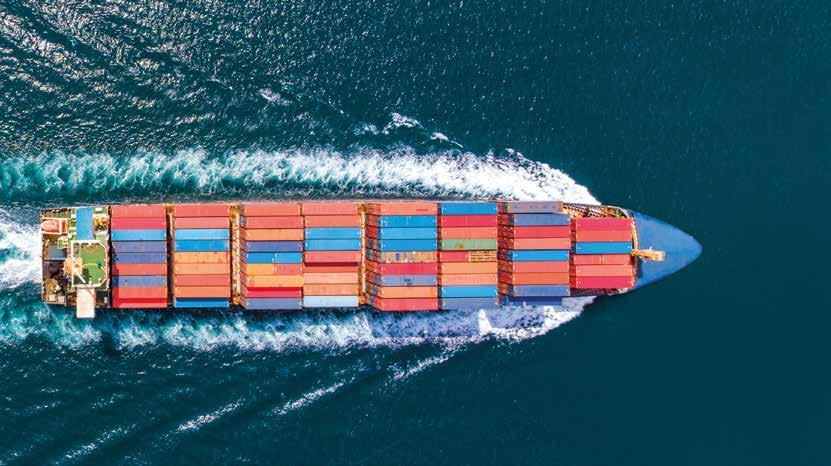
– Provisions need to align the right to regulate for the environment with free and fair trade. RTAs can work towards creating a level playing field between trading partners and avoiding discriminatory practices such as the use of local content requirements.
– Provisions can be considered to promote trade that contributes to positive environmental outcomes, such as trade in environmental goods and services), enhancing environmental co-operation on issues of
joint interest, and fostering regulatory coherence such as on technical regulations, standards and conformity assessment procedures.
– Provisions can also be considered to avoid negative environmental consequences, such as reflecting environmental considerations in overarching objectives of the agreement, using non-regression clauses for environmental regulations, requiring environmental impact assessments, encouraging specific measures such as the phase out of fossil fuel subsidies.
– Provisions can also work to strengthen environmental governance, such as reaffirming commitments to MEAs, enhancing lawenforcement and regulatory capacity building, and installing dedicated mechanisms for institutional arrangements, environmental monitoring and oversite, public participation, dispute settlement, and promoting transparency.
l Insights from series of dedicated OECD workshops suggest that inclusive dialogues with government officials and experts in a non-negotiation setting provide valuable opportunities to share experiences and best practices with different trading partners in considering environmental provisions in RTAs. These experiences can provide important precedents that can be considered at the multilateral level.
POLICY PERSPECTIVES REGIONAL TRADE AGREEMENTS AND THE ENVIRONMENT 3
Introduction –Why do Regional Trade Agreements incorporate environment objectives? 1
Regional trade agreements (RTAs) aim to promote free trade and economic integration between trading partners. They can complement the multilateral trading system by providing trading partners with an opportunity to liberalise trade and to set forth commitments that go beyond multilateral trade rules.
RTAs can take various forms including, Free Trade Agreements (FTAs), Customs Unions (CUs), and Economic Integration Agreements (EIAs). More than 200 countries have signed at least one RTA. The European Commission is involved in many agreements (more than 70 since 1990), and other major actors include, e.g. Canada, Chile, the European Free Trade Association (EFTA), Mexico, Turkey, the United Kingdom and the United States.
While lowering tariffs is a common goal of RTAs, more and more agreements cover other trade-related topics, including the environment. The North American Free Trade Agreement (NAFTA) and its side agreement, the North American Agreement on Environmental Cooperation (NAAEC), signed in 1992, are often considered as landmark precedents in incorporating environmental objectives. As environment and trade concerns are linked to a greater degree as the world economy becomes more integrated, environmental considerations are increasingly incorporated in RTAs.
Currently most countries forge RTAs with some types of environmental provisions in the form of dedicated environment chapters and articles, or through “greening” of other chapters (see Figure 1).
Countries have several general motivations for incorporating environmental objectives in RTAs:
l To contribute to the overarching goal of sustainable development;
l To pursue an international environmental agenda;
l To ensure a level playing field among Parties to the agreement;
l To enhance environmental co-operation
The context is also evolving where many countries place further considerations in RTAs:
The North American Free Trade Agreement (NAFTA) and its side agreement, the North American Agreement on Environmental Cooperation (NAAEC), signed in 1992, are often considered as landmark precedents in incorporating environmental objectives.

4 REGIONAL TRADE AGREEMENTS AND THE ENVIRONMENT
l To support multilateral objectives, including Sustainable Development Goals (SDGs), COP21 Paris Agreement, Multilateral Environmental Agreements (MEAs).
l To increase the public acceptability of trade agreements and trading relationships.
l To secure the mutual supportiveness of trade and environment policies, ensuring that trade policies support and do not harm the environment, and environmental policies do not act as disguised protectionist measures.
Since 2005, OECD’s Joint Working Party on Trade and Environment (JWPTE) has been carrying out work on Regional Trade Agreement and the environment. These efforts mainly focused on four workstreams:
l Tracking the typology of environmental provisions in RTAs;
l Examining the implementation and effectiveness of environmental provisions in RTAs;

l Exploring ways to improve environmental policy coherence within these agreements;
l Organising workshops to ensure an inclusive agenda.
REGIONAL TRADE AGREEMENT
Preamble
1. General Definitions and Initial Provisions
2. National Treatment and Market Access
3. Trade Remedies
4. Technical Barriers to Trade
5. Sanitary and Phytosanitary Measures
6. Customs and Trade Facilitation
7. Subsidies
8. Investment
9. Trade in Services
10. Government Procurement
11. Intellectual Property
12. Environment, Sustainable Development
13. Cooperation and Capacity Building
14. Transparency
15. Exceptions
16. Dispute Settlement
17. Final Provisions
Source: OECD (2016).
POLICY PERSPECTIVES REGIONAL TRADE AGREEMENTS AND THE ENVIRONMENT 5
Figure 1: Example of chapters and articles contained in an RTA
Tracking typology – What kinds of environmental provisions are included in RTAs? 2
A growing number of RTAs are extending their scope to cover policy objectives for environmental protection and sustainable development. Among the 775 RTAs signed between 1947 and 2021, 671 agreements (around 87%) contain at least one provision that specifically mentions the environment.
Among them, trends emerge in including substantive environmental provisions beyond environmental exceptions and reference in the preamble (see Figure 2 Panel A below). The average number of environmental provisions included in an agreement per year,
increased from around 8 provisions in the 1990s, to nearly 19 provisions in the 2000s, and then to over 44 provisions in the 2010s, indicating an increasing trend to reflect environmental objectives in RTAs (see Figure 2 Panel B).
Panel A: Cumulative number of RTAs with environmental provisions Chart Area (by year of signature), 1990-2021
Cumulative number of RTAs without environmental provisions
Cumulative number of RTAs with environmental provisions (beyond exceptions and preamble)
Cumulative number of RTAs with environmental provisions (only exceptions and preamble)
Cumulative number of RTAs
Cumulative number of RTAs with environmental provisions
Panel B: Number of RTAs and environmental provisions on average (by year of signature), 1990-2020
RTAs signed in that year Average environmental provisions in RTAs signed in that year (right axis)
Source: OECD based on Trade and Environment Database (TREND) database.1
6 REGIONAL TRADE AGREEMENTS AND THE ENVIRONMENT 106 565 104 775 671 0 200 40 35 30 25 20 15 10 5 0 80 70 60 50 40 30 20 10 0 400 600 800 1990 1991 1992 1993 1994 1995 1996 1997 1998 1999 2000 2001 2002 2003 2004 2005 2006 2007 2008 2019 2010 2011 2012 2013 2014 2015 2016 2017 2018 2019 2020 2021 1990 1991 1992 1993 1994 1995 1996 1997 1998 1999 2000 2001 2002 2003 2004 2005 2006 2007 2008 2019 2010 2011 2012 2013 2014 2015 2016 2017 2018 2019 2020
Figure 2: Evolution of RTAs and environmental provisions
1. Morin, JF, A. Dür and L. Lechner (2018), “Mapping the trade and environment nexus: Insights from a new dataset”, Global Environmental Politics, vol. 18, No 1.
over
Estimating the potential environmental effects of a trade agreement
Establishing mechanisms for consultation and arbitration procedures on environmental committments between Parties
Promoting access to environmental information, decision-making, and public submissions
Reaffirming commitments in MEAs between Parties
Establishing a specific body to monitor and the application of environmental provisions
Ten main types of environmental provisions frequently included in RTAs
Implementation mechanisms
Setting broad environmental goals for the entire agreement

Incorporating general exceptions for the environment
Enhancing environmental cooperation between Parties
Speci
environmental issues
Promoting specific environmental issues, e.g. climate change, biodiversity, water quality
Maintaining or improving environmental standards and creating a level playing field for trade between Parties
Even between agreements negotiated by the same country, the purpose, nature, scope, and language of environmental provisions in RTAs can differ significantly. A provision referring to a similar issue may be included in two different RTAs, but it may take different forms, located in a different parts of the agreement or be expressed in different wording. Regardless of this
heterogeneity and challenges to identify similarities, several main categories emerge from analysis of their characteristics (Gallagher and Serret, 2011; George, 2014b; George and Yamaguchi, 2018). Based on these tracking exercises, Figure 3 describes the ten main types of environmental provisions frequently included in RTAs.
Figure 3: Typology of environmental provisions
Source: George and Yamaguchi (2018)
c
Environmental
Public
Dispute
Exceptions
Impact assessment
Multilateral Environmental Agreements environmental law
co-operation
participation
settlement
Preamble
Uphold
Carving-out “exceptions” for environment objectives is the most frequently included environmental provision and included
in
80% of all RTAs
The number of RTAs with environmental provisions has increased over time for each category (Figure 4, Panel A). Carving-out “exceptions” for environment objectives is the most frequently included environmental provision and included in over 80% of all RTAs. This was the predominant approach to environmental provisions pre-1990.
Since the 1990s, several main environmental provisions have emerged. These include references to Multilateral Environmental Agreements (58% of all RTAs) such as the Paris Agreement, the Convention on International Trade in Endangered Species of Wild Fauna and Flora (CITES) the Basel Convention on the Control of Transboundary Movements of Hazardous Wastes and Their Disposal. Commitments to uphold environmental law (45% of all RTAs) have also quickly evolved to reflecting possible interests to establish a level playing field between
trading partners, surpassing provisions to enhance environmental co-operation (44% of all RTAs). References to specific environmental issues were included in 37% of all RTAs. Figure 4, Panel B provides a further breakdown of these specific environmental issues, which includes references to biodiversity, circular economy, ocean, land, energy, climate change, chemicals, air pollution, the ozone layer, and other environmental issues (e.g. other forms of pollution).
In the 2000s, other environmental provisions materialised. Preambular clauses reflecting environmental objectives have been included in 24% of all RTAs. This was followed by dedicated implementation mechanisms (20% of all RTAs), public participation and dispute settlement mechanisms (both represented in 17% of all RTAs), and environmental impact assessments (7% of all RTAs).
8 REGIONAL TRADE AGREEMENTS AND THE ENVIRONMENT
Source: OECD based on TREND database.2 2. Morin, JF, A. Dür and L. Lechner (2018), “Mapping the trade and environment nexus: Insights from a new dataset”, Global Environmental Politics, vol. 18, No 1. 621 1990 1991 1992 1993 1994 1995 1996 1997 1998 1999 2000 2001 2002 2003 2004 2005 2006 2007 2008 2009 2010 2011 2012 2013 2014 2015 2016 2017 2018 2019 2020 2021 447 345 342 285 186 155 129 51
Figure 4: Cumulative number of RTAs with environmental provisions by category, 1990-2021
Exceptions Multilateral Environmental Agreements Uphold environmental law Environmental co-operation Specific environmental issues Preamble Implementation mechanisms Public participation Dispute settlement Impact assessment 0 200 100 400 300 500 600 700 Biodiversity Circular economy Ocean Land Energy Other Climate change Chemical Air pollution Ozone layer 2% Panel B: Breakdown of "specific environmental issues" as of 2021 16% 15% 14% 11% 10% 10% 9% 8% 5%
Panel A: Cumulative number of RTAs with environmental provisions (by year of signature and by category) 1990-2021
BOX
1: In what ways are climate change objectives reflected in RTAs?
Explicit references to climate change appear limited to a certain degree (Figure 4, Panel B). However, provisions related to climate change are found more broadly, such as references to climate-related Multilateral Environmental Agreements (not least the Kyoto Protocol and Paris Agreement), promotion of environmental goods and services (such as renewable energy technologies), encouraging the phase out of fossil fuel subsidies, and addressing deforestation. Taking this broad approach, climate-related provisions are found in at least 212 RTAs out of 775 RTAs signed between 1947 and 2021. For example, climaterelated provisions can include references to:
l to address climate change and to enhance climate-related co-operation (e.g. co-operation on energy efficiency, renewable energy, clean energy technologies and carbon markets);
l to reaffirm commitments under the United Nations Framework Convention on Climate Change (UNFCCC), the Kyoto Protocol, and the Paris Agreement;
l to liberalise trade in environmental goods and services, and promote technology diffusion;
l to promote mutual recognition or harmonisation of regulatory standards related to climate action;
l to encourage the phase out of fossil fuel subsidies; and
l to act against deforestation.
As climate co-operation becomes a crucial element between trading partners with ambitious climate targets, RTAs are deemed to further reflect climate related objectives into their agreements.

POLICY PERSPECTIVES
Source: OECD based on van Asselt (2017) and TRENDS database.3
REGIONAL TRADE AGREEMENTS AND THE ENVIRONMENT 9
3. Morin, JF, A. Dür and L. Lechner (2018), “Mapping the trade and environment nexus: Insights from a new dataset”, Global Environmental Politics, vol. 18, No 1.
As climate co-operation becomes a crucial element between trading partners with ambitious climate targets, RTAs are deemed to further reflect climate related objectives into their agreements.
Implementation and effectiveness –Do environmental provisions have any impact? 3
It is likely that environmental provisions in RTAs have, to some extent, contributed to positive environmental outcomes. In an effort to better understand how environmental provisions in RTAs have an impact on environmental outcomes, the implementation and effectiveness of environmental provisions in RTAs can be evaluated.
IMPLEMENTATION OF ENVIRONMENTAL PROVISIONS
Using a desk review and a survey to trade negotiators, environment officials, and experts, George and Yamaguchi (2018) revealed that the implementation of environmental provisions is only scarcely documented in evaluation reports (mainly those involving the United States, the European Union, and Canada) and often remains largely unknown. Nevertheless, anecdotal evidence suggests that some RTAs with environmental provisions have led to positive environmental outcomes by:
l Strengthening environmental laws and regulations;
l Introducing new institutional arrangements;
l Providing co-operation on improving environmental law and enforcement, and
l Improving environmental awareness.
The results confirm signs that progress has been made in putting some environmental provisions in RTAs into practice. The successful enforcement of environmental laws, such as those to protect biodiversity and ecosystems, to manage natural resources and the environment sustainably, and to conduct environmental assessments, were identified as good practices. Several other success factors include:
l follow-up action between the Parties, including co-operation activities, capacity development of government officers, and interagency co-ordination,
l public participation to enhance environmental governance, including public submissions, complaints and access to remedies, and
l specified institutional mechanisms, such as on monitoring, and reporting on implementation.
EFFECTIVENESS OF ENVIRONMENTAL PROVISIONS
There is limited empirical evidence on the effectiveness of the inclusion of environmental provisions on environmental quality. An analysis by Martinez-Zarzoso (2018) suggests that while sulfur dioxide (SO2) and nitrogen oxide (NOx) emissions appear to have on average decreased slightly more strongly in countries with additional RTAs with environmental provisions than in those without environmental provisions, it could not conclude that the inclusion of environmental provisions leads to better air quality, as results are not statistically significant. More information on the channels of effects, as well as better data on environmental policy stringency and environmental indicators are required to deepen the analysis.

10 REGIONAL TRADE AGREEMENTS AND THE ENVIRONMENT
An analysis of sustainable impact assessments (SIAs) of RTAs (Moïsé and Rubínová, 2021) find that these mechanisms are often deployed during the negotiation phase of an RTA to evaluate the potential economic, environmental, social and human rights effects of a possible agreement. SIAs can help promote environmental protection among other aspects, provide a critical opportunity for dialogue among trading partners and stakeholders, and help improve confidence in the trading system. SIAs can take various forms, including economic modelling, qualitative causal chain analysis and stakeholder consultations, and the application and combination of these different approaches need to be carefully considered.
Several dialogues were also held on environmental impact assessments – which have a narrower scope than SIAs, focusing on ex-ante and ex-post assessments of environmental impacts of RTAs – including at the OECD workshops on RTAs and the environment in Paris (2010), Vietnam (2014), and Chile (2018).
Ex-ante assessments were highlighted by participants as an important mechanism to ensure that adequate safeguards are in place for environmental risks that are identified in the reviews, usually carried out during the preparation and negotiation phase of RTAs. Different approaches are applied to whether these ex-ante assessments primarily cover environmental impacts in the home country (e.g. those involving the US), or cover impacts in both the home and host country (e.g. those involving the EU). Five types of trade-related effects are generally considered:
l scale effects – related to changes in the amount of economic activity;
l structural effects – related to changes in the patterns of economic activity;
l product effects – related to changes in the availability and flow of products;
l technology effects – related to changes in the availability and flow of technology;
l regulatory effects – related to legal and policy effects of the agreements.
Ex-post assessments remain limited, and are, so far, made available for several agreements concerning Canada, the EU, and the United States. There are examples where the ex-post analysis was conducted by an independent office, dedicated secretariats, or outsourced to a third party. Some common elements of expost analysis of RTAs include assessing their:
l effectiveness;
l efficiency;
l relevance;
l coherence;
l sustainability, and

l comparisons to a non-FTA scenario and ex-ante analysis.
While there are different approaches in conducting evaluation assessments such as the timing, the frequency, the scope and the methodology, common elements identified for successful follow-up included:
l a clear mandate to conduct evaluation assessments;
l a well-defined objective of the agreement and related co-operation activities for follow up, and
l the availability of resources.
Source: OECD (2018; 2015), George (2011), and Moïsé. and Rubínová (2021).
BOX 2: Environmental impact assessment of RTAs – findings from OECD reports and workshops
REGIONAL TRADE AGREEMENTS AND THE ENVIRONMENT . 11 POLICY PERSPECTIVES
Anecdotal evidence suggests that some RTAs with environmental provisions have led to positive environmental outcomes.
Greening RTAs – How can environmental policy coherence be improved? 4
Many governments are increasingly recognising the need to ensure that trade agreements reflect environmental concerns to help achieve overarching environmental goals and to increase their public acceptability.
In this context, there is growing interest among policy makers in how RTAs could go beyond the inclusion of environmental provisions and “mainstream” the pursuit of environmental and sustainable-development objectives throughout different chapters and articles within an agreement. For example, environmental objectives in could be considered in the parts of an agreement covering investment, subsidies or services.
OECD work on “greening RTAs” investigates how different chapters and articles in an RTA can reflect environmental objectives to ensure an integrated policy framework and coherent set of objectives for these agreements to generate environmentally positive outcomes. The work focused on four pillars: (i) investment; (ii) subsidies; (iii) non-tariff measures, technical barriers to trade, and regulatory co-operation; and (iv) trade in services. Examples of approaches in Greening RTAs are illustrated in Figure 5.
Cross-cutting approaches identified from these workstreams include:
l Aligning the right to regulate for the environment with free and fair trade;
l Promoting trade that contributes to positive environmental outcomes, such as those in environmental goods and services and enhancing environmental co-operation;
l Addressing environmental consequences via, impact assessments and non-regression clauses;
l Strengthen environmental governance, through reference to MEAs, regulatory co-operation, institutional mechanisms, public participation, dispute settlement, and promoting transparency.
Other possible approaches in specific areas are further elaborated below.
CROSS-CUTTING
l Align the right to regulate for the environment with free and fair trade
l Promote trade that contributes to positive environmental outcomes
l Address environmental consequences via, impact assessments and non-regression clauses
l Strengthen environmental governance
l Secure right to regulate for the environment while ensuring investor protection
l Promote green investment
l Re-examine commitment schedules (e.g. using updated industry codes, ex-outs)
l Promote regulatory co- operation to liberise trade in environmental services
Subsidies
l Prohibit the use of local content requirements
l Identify non-actionable environmental subsidies
l Reform fossil fuel subsidies transparency
l Promote regulatory coherence on technical regulations, standards and conformity assessment procedures
l Utilise dedicated chapters or annexes
12 REGIONAL TRADE AGREEMENTS AND THE ENVIRONMENT
Figure 5: Examples of approaches in greening RTAs
Source: Yamaguchi (2020a; 2020b), Bellmann and van der Ven (2020), Bellmann and Bulatnikova (2022)
Investment
Non-tariff measures Trade in services
GREENING INVESTMENT PROVISIONS
There are two main approaches to ensure that investment-related provisions are aligned with environmental objectives, including to secure the policy space for the environment, and to promote green investment (Yamaguchi, 2020a).
Regarding the first approach, it is crucial to establish robust investor protection while asserting policy space for environmental regulation. Some good practices include:
l stating that non-discriminatory environmental regulation measures do not constitute indirect expropriation;
l promoting the relevant technical expertise of the arbitral tribunal for disputes related to environmental measures.
Concerning the second approach in encouraging green investment, trade agreements achieve important opportunities to promote environmentally friendly
investment (such as for the deployment of renewable energy sources) and environmentally responsible investment (e.g. in compliance with environmental requirements). Over the past two decades, investments in renewable energy have increased faster than investments in the entire economy (see: Figure 6). While being an underexplored area, RTAs can promote green investment in the following ways:
l establish overarching commitments for green investments in the preamble;
l promote environmentally responsible investment with reference to national laws and internationally available standards (such as OECD Guidelines for Multinational Enterprises and Due Diligence Guidance for Responsible Business Conduct);


l promote environmentally friendly investment through home-state obligations on frameworks for investment facilitation as well as by including commitments on cooperation and capacity building of investment promotion agencies.

POLICY PERSPECTIVES
Note: Investment flows (2000-14) in billion USD; trillion constant USD; patents (2000-12). Data covers investment made in grid-connected renewable energy projects, excluding large hydro power and nuclear energy, in 49 OECD and G20 countries.
Renewable investments (bn. 2005 USD) Economy-wide investments (tn. constant USD) Renewable investments Economy-wide investments 200 2000 2001 2002 2003 2004 2005 2006 2007 2008 2009 2010 2011 2012 2013 2014 180 160 140 120 100 80 60 40 20 0
Source: Yamaguchi (2020a), based on Ang, et al. (2017).4
4. Ang, G., D. Röttgers and P. Burli (2017), “The empirics of enabling investment and innovation in renewable energy”, OECD Environment Working Papers, No. 123, OECD Publishing, Paris, https://doi.org/10.1787/67d221b8-en
Figure 6: Trends in investments in renewable energy in the OECD and the G20
Subsidies for energy and environmental goods can have both environmental and trade impacts (Yamaguchi, 2020b). The WTO Agreement on Subsidies and Countervailing Measures (ASCM) regulates subsidies that have distorting effects on trade and specifies responses that Members may have at their disposal (such as requesting their withdrawal through the WTO dispute settlement process or taking unilateral corrective action in the form of countervailing duties).
RTAs can provide an additional layer of disciplines by reaffirming WTO rules, agreeing to deepen or expand multilateral commitments; or agreeing to refrain from taking remedial actions between the Parties to the agreement. Several measures can be taken (and summarised in Figure 7):
l To explicitly prohibit the use of local-content requirements in relation to renewable energy development or in a broader sense to ensure nondiscriminatory policies for the environment. This approach can reaffirm the prohibition of local-content requirements under WTO rules or provide additional commitments on services or qualitative requirements.
l To agree on a set of non-actionable subsidies that clearly benefit the environment and are protected from formal WTO challenges and remedial action among likeminded Parties. However, difficulties remain in identifying a special regime for the environment between Parties, and in carving out disciplines that can still be challenged by other WTO members.
Agree on a list of subsidies that are supportive to the environment
Prohibit the use of local-content requirements tied to renewable energy development or in a broader sense

Reaffirm commitments under WTO rules or provide additional commitments on services or qualitative requirements
Include commitments to phase-out fossil fuel subsidies
Reaffirm reporting commitments on specific subsidies through the WTO, and through other existing schemes such as the OECD and the SDG Indicator 12.c.1
14 REGIONAL TRADE AGREEMENTS AND THE ENVIRONMENT
Figure 7: Possible approaches in greening RTAs on subsidies for energy and environmental goods
Source: Yamaguchi (2020b).
Nonactionable subsidies Subsidy phase-outs Local content requirements (LCRs) Transparency
SUBSIDIES RELATED TO ENERGY AND ENVIRONMENTAL GOODS
l To consider subsidy phase-outs based on environmental objectives, such as disciplines to progressively reduce fossil-fuel subsidies between Parties.
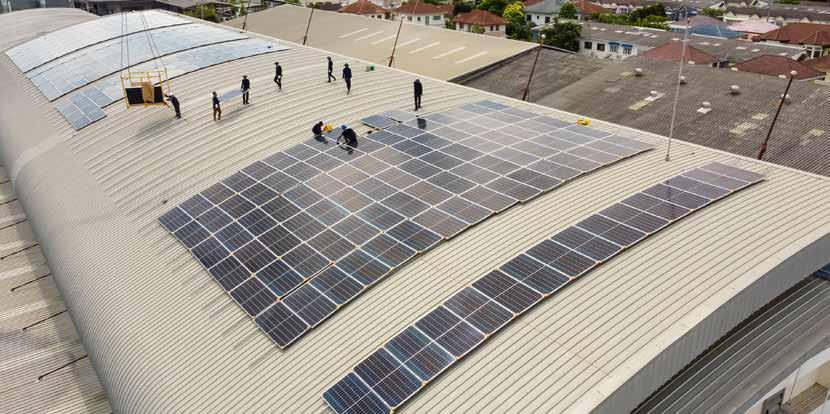
l To increase the transparency of environmentally related subsidies, including by fulfilling their notification obligations under the WTO, and align reporting efforts with existing schemes such as through the OECD, or SDG Indicator 12.c.1 process to avoid unnecessary duplication.
GREENING REGIONAL TRADE AGREEMENTS ON NON-TARIFF MEASURES
As traditional tariff barriers are gradually reduced around the world, trading partners seek deeper economic integration by addressing non-tariff barriers, such as technical barriers to trade (TBT) (Bellmann and van der Ven, 2020). Over two thirds of all notifications of measures connected to the environment in the WTO are in the form of technical trade barriers (see Figure 8). Governments frequently use such measures, which can be in the form of standards, technical regulations, or conformity assessment procedures, to advance public policy goals, including for the environment. Environmental regulations can be very costly for exporters to comply with even though they are crucial for addressing sustainability
Technical barriers to trade
Sanitary and phytosanitary measures Agriculture
issues, especially when they differ across jurisdictions. By following due process when establishing regulations, using good regulatory practices (GRP), and engaging in international regulatory cooperation (IRC), this can be mitigated through enhanced regulatory coherence.
REGIONAL TRADE AGREEMENTS AND THE ENVIRONMENT 15
POLICY PERSPECTIVES
Source: Bellmann and van der Ven (2020)
Figure 8: Environment-related measures notified to the WTO by agreement 2009-2021
Subsidies and countervailing measures
procedures Quantitative restrictions Government procurement Other 62% 13% 7% 6% 6% 1% 1% 3%
Import licensing
Disciplines on good regulatory practices and regulatory co-operation can generate environmental benefits by ensuring that technical regulations and standards are fair and scientifically based, involving relevant stakeholders, promoting harmonization through the adoption of international standards, or encouraging mutual recognition of conformity assessment procedure. Possible approaches in reflecting environmental objectives in the areas of technical barriers to trade and regulatory co-operation include:
l Enhance regulatory coherence on technical regulations, standards and conformity assessment procedures, related to the environment;
l Special provisions, dedicated chapters or sectoral annexes dealing with a particular sector or a specific environmental challenge such as improving energy efficiency or promoting resource efficiency and circular economy.
INCORPORATING ENVIRONMENTAL PROVISIONS RELATED TO TRADE IN SERVICES

Trade in environmentally related services is essential in solving environmental issues (Bellmann and Bulatnikova, 2022). Environmental technology diffusion is not only encouraged by trade in environmental goods themselves,
but also by the associated services that accompany these technologies such as consultancy, installment, monitoring and maintenance service. It allows businesses to take advantage of economies of scale and comparative advantages. The use of Regional Trade Agreements (RTAs) as a tool to control and promote global service trade is growing. Out of the 270 RTAs notified to the GATT and WTO between 1956 and May 2016, 101 of those contained schedules of commitments on environmental services.5 RTAs feature two broader measures dealing with environmental aspects of trade in services: first establishing disciplines aimed at striking a balance between the right to regulate for environmental purposes and second, facilitating trade in environmental services and avoiding unnecessary trade barriers.
The objective to liberalise trade in particular services sectors and limit divergences in environmental regulations or standards can be achieved through:
l re-examining commitment schedules on trade in services:
– considering removing all service restrictions;
– creating a list of services with undated industry codes;
– liberalising services related to specific environmental goods and technologies, and
– using “ex outs,” to differentiate services within subclasses.
16 REGIONAL TRADE
THE
AGREEMENTS AND
ENVIRONMENT
5. Monteiro, J. (2016), “Typology of environment-related provisions in regional trade agreements”, WTO Working Paper, ERSD-2016-13, https://www.wto.org/english/res_e/reser_e/ersd201613_e.pdf
Some RTAs have emerged and incorporated specific provisions related to a circular economy.
l promoting regulatory co-operation to lower the costs associated with unnecessary regulatory divergences between jurisdictions for exporters, through:
– specific provisions on regulatory cooperation related to services in dedicated chapters or annexes dealing with key environmental sectors such as renewable energy or energy efficiency;
– horizontal provisions on regulatory cooperation or good regulatory practices.
The key message is that – as with other provisions – a holistic and consistent approach is necessary to incorporate environmental considerations in services related provisions. Parties interested in liberalising environmental services may wish to engage with other chapters on trade in services and their related commitment schedules (specifying the degree of liberalisation by a trading partner) of as well as regulatory co-operation.
These approaches are compiled in Figure 9.
Source: Bellmann and Bulatnikova (2022)
Source: Bellmann and Bulatnikova (2022)
BOX 3: How can RTAs incorporate circular economy objectives? – findings from OECD workshop
In 2021, the OECD workshop on RTAs and the environment, focused inter-alia on RTAs as a vehicle to advance a resource efficient and circular economy transition. Explicit references to a circular economy in RTAs remain scarce but are emerging quickly. Many existing circular economy related provisions focus on natural resources, waste management, and references to the Basel Convention. More recently, some RTAs have emerged and incorporated specific provisions related to a circular economy (e.g. EU-UK Trade and Cooperation Agreement signed in 2020 and enforce since 2021, and the UK-New Zealand Free Trade Agreement signed in 2022).
The workshop identified a number of ways to incorporate circular economy related provisions in RTAs, including the following:
l Parties could promote trade in goods and services that may contribute to a circular economy;

l Parties may also reflect on clarifying different definitions and classifications of waste, secondary materials, second-hand goods, goods for refurbishment and remanufacturing, and its relationship with trade classifications;
l Parties could also work towards the development, harmonisation or mutual acceptance of circular economy related standards.
Source: OECD (2021)
POLICY PERSPECTIVES
Figure 9: Possible approaches to incorporate environmental provisions related to trade in services
Schedule of commitments Regulatory co-operation and good regulatory practices Removing trade barriers affecting environmental services and reducing costs associated with regulatory heterogeneity REGIONAL TRADE AGREEMENTS AND THE ENVIRONMENT . 17
How can the agenda on RTAs and the environment be inclusive?
RTAs offer complementary means to address diverging environmental issues and efforts likely require a combination of substantive provisions, effective implementation and enforcement, and strong co-operation among trading partners.

In this context, effective engagement and establishing inclusive dialogues with trading partners are essential. Inclusive workshops in a non-negotiating setting can play a key role in exchanging recent developments in RTA negotiations, expressing views, identifying emerging topics and preparing insights and preceding examples for consideration at the multilateral level, among others.
The JWPTE organised a series of workshops to establish inclusive dialogues on RTAs and the environment, where government officials and experts from OECD and non-OECD countries gathered together to share their experiences with negotiating and implementing environmental provisions in trade agreements. Between 2006 and 2021, eight workshops were organised on RTAs and environment (Figure 10).6
2018
2008
2010
2014
2007
18 REGIONAL TRADE AGREEMENTS AND THE ENVIRONMENT
5
Figure 10: JWPTE workshops held from 2006 to 2021
6. Details of these workshops are also available at the following links: George (2011) and OECD (2021; 2018; 2017; 2015, 2008a, 2008b).
– Workshop on regional trade agreements and the environment, Tokyo
– Workshop on regional trade agreements and the environment, Santiago
2006 – Workshop on regional trade agreements and the environment, Paris
– Workshop on regional trade agreements and the environment: Monitoring implementation and assessing impacts, Paris
– Workshop on regional trade agreements and the environment: Establishing dialogue with regional stakeholders, Santiago
– Regional workshop on regional trade agreements and the environment, Hà Nôi
2016 – Workshop on greening regional trade agreements: Opportunities and insights from international experience, Paris
2021 – Workshop on regional trade agreements and the environment, virtual meeting
References
Bellmann, C. and A. Bulatnikova (2022), “Incorporating environmental provisions in regional trade agreements in chapters and articles dealing with trade in services”, OECD Trade and Environment Working Papers, No. 2022/01, OECD Publishing, Paris, https://doi.org/10.1787/6e976798-en
Bellmann, C. and C. van der Ven (2020), “Greening regional trade agreements on non-tariff measures through technical barriers to trade and regulatory co-operation”, OECD Trade and Environment Working Papers, No. 2020/04, OECD Publishing, Paris, https://doi.org/10.1787/dfc41618-en
Gallagher, P. and Y. Serret (2011), “Implementing Regional Trade Agreements with Environmental Provisions: A Framework for Evaluation”, OECD Trade and Environment Working Papers, No. 2011/06, OECD Publishing, Paris, http://dx.doi.org/10.1787/5kg3n2crpxwk-en
Gallagher, P. and Y. Serret (2010), “Environment and regional trade agreements: Developments in 2009”, OECD Trade and Environment Working Papers, No. 2010/01, OECD Publishing, Paris, http://dx.doi.org/10.1787/5km7jf84x4vk-en
George, C. and S. Yamaguchi (2018), “Assessing Implementation of Environmental Provisions in Regional Trade Agreements”, OECD Trade and Environment Working Papers, No. 2018/01, OECD Publishing, Paris, https://doi.org/10.1787/91aacfea-en
George, C. (2014a), “Developments in regional trade agreements and the environment: 2013 update”, OECD Trade and Environment Working Papers, No. 2014/01, OECD Publishing, Paris, http://dx.doi.org/10.1787/5jz0v4qcg9zw-en
George, C. (2014b), “Environment and regional trade agreements: emerging trends and policy drivers”, OECD Trade and Environment Working Papers, No. 2014/02, OECD Publishing, Paris, http://dx.doi.org/10.1787/5jz0v4q45g6h-en
George, C. (2013), “Developments in regional trade agreements and the environment: 2012 update”, OECD Trade and Environment Working Papers, No. 2013/04, OECD Publishing, Paris, http://dx.doi.org/10.1787/5k43m4nxwm25-en
George, C. (2011), “Regional trade agreements and the environment: monitoring implementation and assessing impacts: Report on the OECD workshop”, OECD Trade and Environment Working Papers, No. 2011/02, OECD Publishing, Paris, http://dx.doi.org/10.1787/5kgcf7154tmq-en.
George, C. and Y. Serret (2011), “Regional trade agreements and the environment: Developments in 2010”, OECD Trade and Environment Working Papers, No. 2011/01, OECD Publishing, Paris, http://dx.doi.org/10.1787/5kgcf71l188x-en
Gigli, S. (2009), “Environment and regional trade agreements: Developments in 2008”, OECD Trade and Environment Working Papers, No. 2009/01, OECD Publishing, Paris, http://dx.doi.org/10.1787/224028520851
Martínez-Zarzoso, I. (2018), “Assessing the Effectiveness of Environmental Provisions in Regional Trade Agreements: An Empirical Analysis”, OECD Trade and Environment Working Papers, No. 2018/02, OECD Publishing, Paris, https://doi.org/10.1787/5ffc615c-en
Moïsé, E. and S. Rubínová (2021), “Sustainability impact assessments of free trade agreements: A critical review”, OECD Trade Policy Papers, No. 255, OECD Publishing, Paris, https://doi.org/10.1787/65b1a07e-en
POLICY PERSPECTIVES REGIONAL TRADE AGREEMENTS AND THE ENVIRONMENT 19
6
TRADE AGREEMENTS AND THE ENVIRONMENT
OECD (2021), “OECD Workshop on Regional Trade Agreements and The Environment - Summary Report”, 28 October 2021, [COM/TAD/ENV/JWPTE(2021)7/FINAL], Paris, France.
OECD (2019), “Report on the OECD Workshop on Regional Trade Agreements and the Environment in Chile”, 7 September 2018, [COM/TAD/ENV/JWPTE(2018)1/FINAL], Paris, France.
OECD (2017), “Report on the OECD Workshop on “Greening Regional Trade Agreements”, 17 March 2017, [COM/TAD/ENV/JWPTE(2016)7/FINAL], Paris, France.
OECD (2015), “Report on the Regional Workshop on ‘Regional Trade Agreements and the Environment’”, 17 July 2015, [COM/TAD/ENV/JWPTE(2014)48/FINAL], Paris, France.
OECD (2012), “Environment and regional trade agreements: Developments in 2011”, 14 December 2012, [COM/TAD/ ENV/JWPTE(2011)43/FINAL], Trade and Environment Working Paper 2012/01, Paris, France.
OECD (2008a), “OECD Workshop on Regional Trade Agreements and the Environment, Tokyo 19-20 June 2007”, 8 February 2008, [COM/TAD/ENV/JWPTE(2007)34/FINAL], Paris, France.
OECD (2008b), “Report on the OECD Workshop on RTAs and the Environment, Santiago 6-7 October 2008”, 28 November 2008, [COM/TAD/ENV/JWPTE(2008)25], Paris, France.
OECD (2007), Environment and Regional Trade Agreements, OECD Publishing, Paris, http://dx.doi.org/10.1787/9789264006805-en
Tébar Less, C. and S. Gigli (2008), “Update on environment and regional trade agreements: Developments in 2007”, OECD Trade and Environment Working Papers, No. 2008/02, OECD Publishing, Paris, https://www.oecd.org/officialdocuments/publicdisplaydocumentpdf/?cote=COM/TAD/ENV/JWPTE/RD(2007)40/ FINAL/&docLanguage=En.
Tébar Less, C. and J.A. Kim (2008), “Checklist for Negotiators of Environmental Provisions in Regional Trade Agreements”, OECD Trade and Environment Working Papers, No. 2008/02, OECD Publishing, Paris, http://dx.doi.org/10.1787/235708858388
van Asselt, H. (2017), “Climate change and trade policy interaction: Implications of regionalism”, OECD Trade and Environment Working Papers, No. 2017/3, OECD Publishing, Paris, https://dx.doi.org/10.1787/c1bb521e-en
Yamaguchi, S. (2020a), “Greening regional trade agreements on investment”, OECD Trade and Environment Working Papers, No. 2020/03, OECD Publishing, Paris, https://doi.org/10.1787/4452a09d-en
Yamaguchi, S. (2020b), “Greening regional trade agreements: Subsidies related to energy and environmental goods”, OECD Trade and Environment Working Papers, No. 2020/01, OECD Publishing, Paris, https://doi.org/10.1787/7e1fe8ed-en
20
REGIONAL
Other relevant OECD work on trade and environment
Overview of recent work
l OECD (2021) OECD Work on Trade and the Environment - A Retrospective, 2008-2020, https://www.oecd.org/env/retrospective-trade-environment-2008-2020.htm
Environmental goods and services
l Garsous, G. and S. Worack (2021), “Trade as a channel for environmental technologies diffusion: The case of the wind turbine manufacturing industry”, OECD Trade and Environment Working Papers, No. 2021/01, OECD Publishing, Paris, https://doi.org/10.1787/ce70f9c6-en
Trade and climate change
l OECD (2020), Climate Policy Leadership in an Interconnected World: What Role for Border Carbon Adjustments?, OECD Publishing, Paris, https://doi.org/10.1787/8008e7f4-en
l Dellink, R., et al. (2017), “International trade consequences of climate change”, OECD Trade and Environment Working Papers, No. 2017/01, OECD Publishing, Paris, https://doi.org/10.1787/9f446180-en
l van Asselt, H. (2017), “Climate change and trade policy interaction: Implications of regionalism”, OECD Trade and Environment Working Papers, No. 2017/03, OECD Publishing, Paris, https://doi.org/10.1787/c1bb521e-en
Trade and circular economy
l Moïsé, E. and S. Rubínová (2023), “Trade policies to promote the circular economy: A case study of lithium-ion batteries”, OECD Trade and Environment Working Papers, No. 2023/01, OECD Publishing, Paris, https://doi.org/10.1787/d75a7f46-en
l Yamaguchi, S. (2022), “Securing reverse supply chains for a resource efficient and circular economy”, OECD Trade and Environment Working Papers, No. 2022/02, OECD Publishing, Paris, https://doi.org/10.1787/6ab6bb39-en
l Yamaguchi, S. (2021), “International trade and circular economy - Policy alignment”, OECD Trade and Environment Working Papers, No. 2021/02, OECD Publishing, Paris, https://doi.org/10.1787/ae4a2176-en
l Dellink, R. (2020), “The consequences of a more resource efficient and circular economy for international trade patterns: A modelling assessment”, OECD Environment Working Papers, No. 165, OECD Publishing, Paris, https://doi.org/10.1787/fa01b672-en
Trade, environment, digitalisation, and indicators
l Frezal, C. and G. Garsous (2020), “New digital technologies to tackle trade in illegal pesticides”, OECD Trade and Environment Working Papers, No. 2020/02, OECD Publishing, Paris, https://doi.org/10.1787/9383b310-en
l Garsous, G. (2019), “Trends in policy indicators on trade and environment”, OECD Trade and Environment Working Papers, No. 2019/01, OECD Publishing, Paris, https://doi.org/10.1787/b8d2bcac-en
Fossil fuel subsidy reform
l OECD (2021), OECD Companion to the Inventory of Support Measures for Fossil Fuels 2021, OECD Publishing, Paris, https://doi.org/10.1787/e670c620-en
All OECD Trade and Environment Working Papers are freely available.
POLICY PERSPECTIVES
REGIONAL TRADE AGREEMENTS AND THE ENVIRONMENT 21
For more information on OECD work on Regional Trade Agreements and the Environment, please visit the project website:

https://www.oecd.org/environment/environment-andregional-trade-agreements.htm.
Contact us:
Shardul.Agrawala@oecd.org
Head of the Environment and Economy Integration Division, OECD Environment Directorate
Rob.Dellink@oecd.org
Trade and Environment Team Lead and Senior Economist at the Environment and Economy Integration Division, OECD Environment Directorate
Shunta.Yamaguchi@oecd.org
Trade and Environment Policy Analyst, Environment and Economy Integration Division, OECD Environment Directorate
Co-funded by the European Union
OECD Environment Directorate, February 2023























